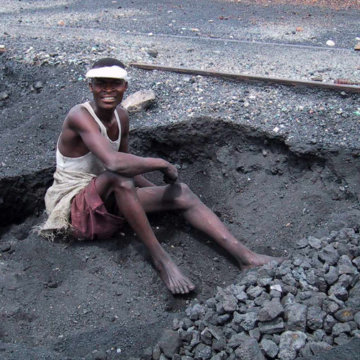- About
- Topics
- Picks
- Audio
- Story
- In-Depth
- Opinion
- News
- Donate
- Signup for our newsletterOur Editors' Best Picks.Send
Read, Debate: Engage.
| topic: | Human Rights |
|---|---|
| located: | Zambia |
| editor: | Bob Koigi |
A smelter in the Zambia’s provincial capital of Kabwe that has been in existence for over 100 years has been a public health emergency for releasing heavy metals, top among them is lead, which continues to poison generations. And although the mine closed operations in 1994, it is still posing a serious danger, especially to the 76,000 people living at the most contaminated areas of Kabwe.
Children are the most vulnerable as they inhale or ingest the lead dust during playtime and because their brains and bodies are still developing. Researchers also argue that children absorb up to four times more lead than adults. This exposure has seen them suffer from impaired growth, liver, brain, kidney and nerve damages, learning disabilities, convulsions and even death.
According to a 2015 study by the University of Zambia, 246 children under 7-years-old who were tested had enough lead in their blood to trigger neurological impairments.
In 2017 Pure Earth, a global organisation that works to address pollution problems screened 196 children aged between two and eight years old and found that the average lead in their blood was at dangerously elevated levels.
Yet despite such alarming reports, there hasn’t been commensurate efforts to tackle the disaster. The government’s interventions have largely flopped, including clean up campaigns of planting grass in the area in order to provide top clean soil and reducing dust. Residents were struggling with watering the grass after the programme concluded.
A five-year World Bank-funded project that was set to kick off in 2016 and which included environmental cleanup and health campaigns to create more awareness hasn’t taken off thanks to government bureaucracy. Public health institutions in Kabwe on the other hand struggle with access to tests that detect lead poisoning to necessitate treatment and chelation the medication necessary to remove the metals from the blood. As a result, more deaths from children and mothers continue to be reported.
The onus still remains with the government to get its house in order and treat this catastrophe with the seriousness it deserves. Elaborate and sustainable treatment methods that prioritise children who are the most vulnerable coupled with well thought out clean-up efforts should be the government’s top priority before an entire generation is wiped out by something that can easily be prevented.
Image Courtesy of Pure Earth
